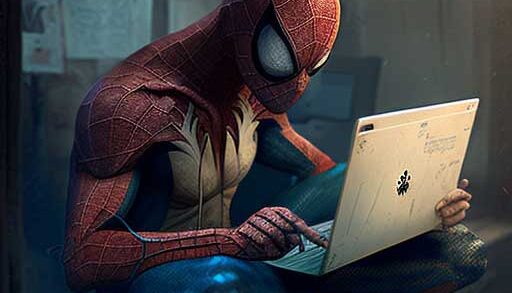Explanation what intellectual property rights are?
In the world of crypto and NFTs, intellectual property refers to the creations of the mind, such as literature, artwork, and inventions. However, with the rise of the digital era and widespread copying and pasting, enforcing these protections has become increasingly difficult.
Enter non-fungible tokens (NFTs), an exciting development that has the potential to revolutionize everything from music albums to movie merchandise and stunning art pieces. However, as with any emerging technology, challenges must be overcome.
One such challenge is defining the rights of NFT owners. If an NFT is stolen, does the rightful owner still maintain intellectual property rights? Additionally, how can we prevent the creation of copycat NFTs on competing blockchains? These are just a few of the issues the industry is currently grappling with.
Article structure:
If I purchase an NFT, do I also acquire the intellectual property rights automatically?
It’s crucial to read the fine print and understand exactly what you’re purchasing. To illustrate, let’s examine a few examples.
In March 2021, Jack Dorsey sold his first tweet as an NFT for a staggering $2.9 million. However, the buyer, Sina Estavi, does not own the intellectual property rights to the tweet – the copyright still belongs to Dorsey.
Similarly, The New York Times auctioned off an NFT of a tongue-in-cheek article about crypto collectibles, which sold for 350 ETH, equivalent to $560,000 at the time, and about $600,000 as of August 2022. While the buyer received certain perks, such as the opportunity to be named and photographed in a future piece, they did not obtain copyright or reproduction rights for the article.
But the potential pitfalls don’t end there. MetaBirkins, a digital version of Hermes’ famous bags, have gained popularity during the NFT boom. However, digital artist Mason Rothschild faced legal action from Hermes, which claimed the NFT could cause confusion among consumers.
In short, when it comes to NFTs, it’s essential to be aware of what you’re buying and what rights come with it.
Are there any NFT collections that have granted intellectual property rights to their buyers?
Some of the most popular NFT collections, including Bored Ape Yacht Club, are now offering users full intellectual property rights. This is a game-changing move that could lead to substantial profits for NFT owners. Celebrities such as Eminem and Snoop Dogg have already capitalized on this opportunity, featuring their NFT characters in a music video. Additionally, collectors can rent out their NFTs to brands for use in advertising campaigns.
Recently, actor Seth Green announced plans to create a TV show centered around his beloved Bored Ape NFT, affectionately named Fred, called White Horse Tavern. However, his NFT was stolen in a phishing attack, and he had to pay a significant amount to recover it. Although the BAYC license states that NFT buyers “own the underlying Bored Ape, the Art, completely,” it does not specify what happens in cases of theft. Legal experts believe that Green may have a strong case to proceed with the TV show even without the NFT, but there are no guarantees. Investors should be aware of the potential risks and uncertainties associated with owning NFTs and the evolving legal landscape surrounding them.
In what ways can NFTs and Web3 protocols facilitate the transfer of intellectual property rights?
The current era is marked by intense conflicts over intellectual property and stifling innovation, but a promising change is underway.
Advanced categories of NFTs can serve as a means of verifying the authenticity of non-fungible assets, protecting their individuality, and simplifying the management of rights.
Leading this effort is InvArch, a blockchain platform for intellectual property rights that is designed to be scalable, interoperable, and integrated across the Web3 landscape. The InvArch system, called INV4, uses a protocol that encompasses Invention, Involvement, Inventory, and Investment. This protocol provides piracy-resistant files and on-chain copyright and licensing protection.
InvArch envisions a decentralized music ecosystem that allows independent artists to contribute unique elements that are combined to create a song with a range of beats and riffs. Each contributor retains their intellectual property rights, jointly owns the rights to the track, and shares in the royalties. This is just one example of how InvArch’s approach can revolutionize the creative industry.
Is it possible to utilize smart contracts for intellectual property agreements?
Absolutely! Blockchain technology has the potential to revolutionize business deals and InvArch is leading the way in this regard. The platform aims to empower owners of highly sought-after NFTs, such as CryptoPunks, Bored Apes, and Meebits, with on-chain agreements that can extend to third-party products.
In a recent blog post, InvArch outlined its vision for a marketplace that caters to communities’ interests, where artists and NFT copyright owners can establish lucrative income streams and increase the raw value of their digital assets. This approach promises to benefit both NFT owners and consumers, ushering in a new era of innovation and collaboration.
Good to know: How do high-risk margin trading and keen futures differ from each other?
How can NFTs and intellectual property assets transform DeFi, DAOs, and the metaverse?
InvArch has unveiled its plans to provide a faster way to create decentralized autonomous organizations, offering new opportunities for non-profits to fund intellectual property development while retaining their IP rights. This innovative approach is set to remove roadblocks to innovation, replacing them with a “development highway.” Furthermore, InvArch’s technology could also provide greater protection for those building on virtual plots of land in the metaverse and unlock new business opportunities in DeFi. The project recently won the 43rd Kusama parachain auction and showcased its technology, which makes stealing anything from music to code “all but impossible.” Notably, this solution also addresses centralization in IP by offering a more affordable alternative to the current status quo.



